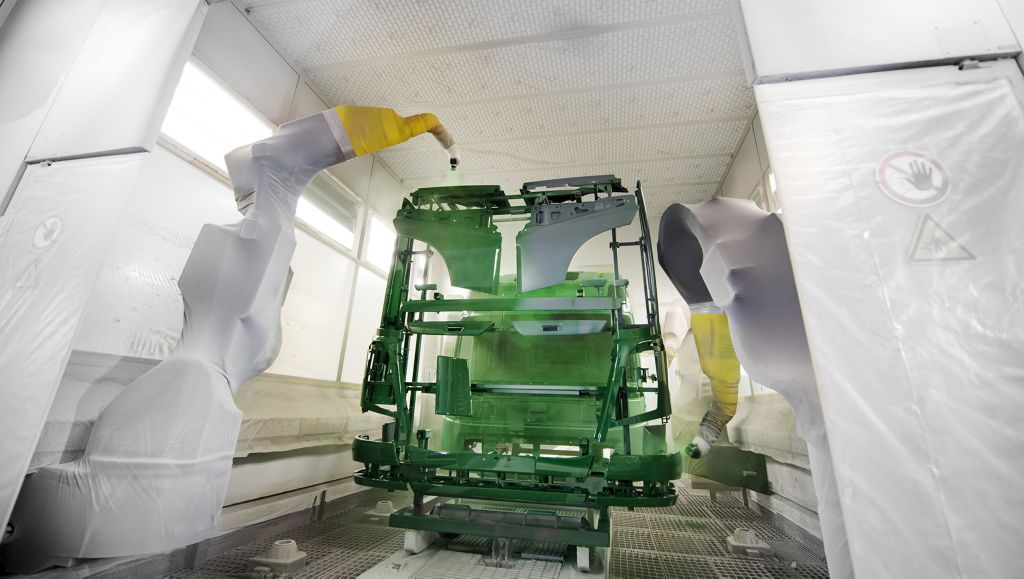True colours


At the Volvo Trucks’ cab plant in Umeå, northern Sweden, the paint shop and laboratory are responsible for painting all heavy-duty cabs before they are shipped to the main assembly lines. Ensuring a high-quality, unblemished finish is a long and meticulous process that involves over nine kilograms of paint and takes a full day to complete. “People expect the colour they ordered, and if they receive anything different, even if it’s only a small difference, they will be highly dissatisfied,” says Andreas Bask, Paint Lab Manager, Cab and Vehicle Assembly in Umeå.
The whole process starts with the customer, who can choose from over 800 different colours that Volvo Trucks currently has in its colour bank. Despite the huge variety on offer, by far the most popular choice is white – more specifically Winter White, which accounts for nearly half of all cabs painted in Umeå. Various other shades of white also account for a large portion of the remaining half.
With the exception of Winter White, all paint is mixed on the premises, with around 4000 litres being mixed every week. If a customer has a specific request, and it cannot be found in the colour bank, then the technicians in the paint lab can usually develop it specially. “We have, for example, received samples on a piece of fabric, mobile phone shell or nail polish,” adds Andreas Bask.
“In most cases, we are able to offer customers colours that are very close to the ones they want or else we can develop a totally new colour. Only in very rare cases are we forced to say no. That’s when the colour doesn’t have the necessary properties.”
Since 2000, robots have been used to do the actual painting, and today the whole process is fully automated. Underneath the main painting area lies a storage room which is filled with countless buckets of different paint colours, each identifiable by barcode and each connected by tube to the robots above. There is enough paint in here for two to three days of production.
People expect the colour they ordered, and if they receive anything different, even if it’s only a small difference, they will be highly dissatisfied.
The advanced fully automated system pumps up paint from the selected bucket much like a straw, and ensures that only the exact amount of paint needed is used, thus minimising waste. This is followed by a solvent that cleans the tubing so that different paint colours are not mixed together.
In recent years, the paint shop has been working hard on its environmental impact, mainly through reducing the amount of solvent used. Three of the five production lines use water based paint, while an advanced cleaning system is designed to minimise the use of cleaning products.
In total, including all layers and coats, around nine kilograms of paint will be used on each cab. The first two layers are corrosion protectants, followed by a primer to ensure better adhesion and durability for the paint system, as well as ensuring the correct underlying colour. The next layer is either a base coat followed by a clear coat, or a pigmented topcoat directly on top of the primer. These later coats provide the final colour and mechancal properties as specified by the customer.
Along with the cab, a small metallic panel is also painted, which is a vital part of quality control. Once completed, the panel is taken to the paint lab, where it is inserted into a spectrophotometer and compared with the master colour in the main database. Since so many colours and shades are alike, a small variation can easily be missed by the human eye. If the spectrophotometer does detect a discrepancy, the cab is returned to the line to be repainted.
The final check is a visual inspection from a human eye under strong fluorescent lighting, to ensure there are no missed spots or irregularities. Quality Control operators also run their hands over the surface to ensure there are no bumps, scratches or uneven surfaces.
Only when the cab has passed all these tests, is it ready to join the main assembly line.
800 colours are currently offered by Volvo Trucks.
250-350 cabs painted in Umeå per day.
64,000 cabs painted in 2016.
9 kilograms of paint used on each cab.